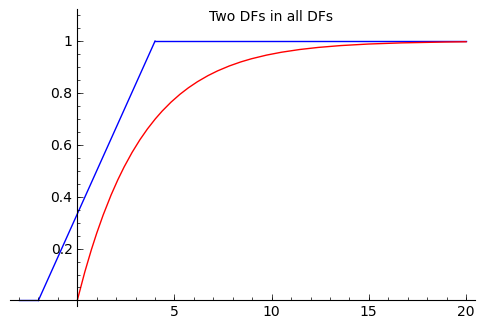Topics¶
- Nonparametric Estimation
- Glivenko-Cantelli Theorem
- Dvoretsky-Kiefer-Wolfowitz Inequality
- Plug-in Estimator
- Nonparametric Confidence Intervals via Bootstrap
- Nonparametric Hypothesis Testing
- Permutation Testing
- Permutation Testing with Shells Data
Inference and Estimation: The Big Picture¶
The Big Picture is about inference and estimation, and especially inference and estimation problems where computational techniques are helpful.
| Point estimation | Set estimation | Hypothesis Testing | |
|
Parametric
|
MLE of finitely many parameters |
Asymptotically Normal Confidence Intervals |
Wald Test from Confidence Interval |
|
Non-parametric |
about to see ... | about to see ... | about to see ... |
So far we have seen parametric models, for example
- $X_1, X_2, \ldots, X_n \overset{IID}{\sim} Bernoulli (\theta)$, $\theta \in [0,1]$
- $X_1, X_2, \ldots, X_n \overset{IID}{\sim} Exponential (\lambda)$, $\lambda \in (0,\infty)$
- $X_1, X_2, \ldots, X_n \overset{IID}{\sim} Normal(\mu^*, \sigma)$, $\mu \in \mathbb{R}$, $\sigma \in (0,\infty)$
In all these cases the parameter space (the space within which the parameter(s) can take values) is finite dimensional:
- for the $Bernoulli$, $\theta \in [0,1] \subseteq \mathbb{R}^1$
- for the $Exponential$, $\lambda \in (0, \infty) \subseteq \mathbb{R}^1$
- for the $Normal$, $\mu \in \mathbb{R}^1$, $\sigma \in (0,\infty) \subseteq \mathbb{R}^1$, so $(\mu, \sigma) \subseteq \mathbb{R}^2$
For parametric experiments, we can use the maximum likelihood principle and estimate the parameters using the Maximum Likelihood Estimator (MLE), for instance.
Non-parametric estimation¶
Suppose we don't know what the distribution function (DF) is? We are not trying to estimate some fixed but unknown parameter $\theta^*$ for some RV we are assuming to be $Bernoulli(\theta^*)$, we are trying to estimate the DF itself. In real life, data does not come neatly labeled "I am a realisation of a $Bernoulli$ RV", or "I am a realisation of an $Exponential$ RV": an important part of inference and estimation is to make inferences about the DF itself from our observations.
Observations from some unknown process¶

Consider the following non-parametric product experiment:
$$X_1, X_2, \ldots, X_n\ \overset{IID}{\sim} F^* \in \{\text{all DFs}\}$$We want to produce a point estimate for $F^*$, which is a allowed to be any DF ("lives in the set of all DFs"), i.e., $F^* \in \{\text{all DFs}\}$
Crucially, $\{\text{all DFs}\}$, i.e., the set of all distribution functions over $\mathbb{R}$ is infinite dimensional.

We have already seen an estimate, made using the data, of a distribution function: the empirical or data-based distribution function (or empirical cumulative distribution function). This can be formalized as the following process of adding indicator functions of the half-lines beginning at the data points $[X_1,+\infty),[X_2,+\infty),\ldots,[X_n,+\infty)$:
$$\widehat{F}_n (x) = \frac{1}{n} \sum_{i=1}^n \mathbf{1}_{[X_i,+\infty)}(x)$$where,
$$\mathbf{1}_{[X_i,+\infty)}(x) := \begin{cases} & 1 \quad \text{ if } X_i \leq x \\ & 0 \quad \text{ if }X_i > x \end{cases}$$